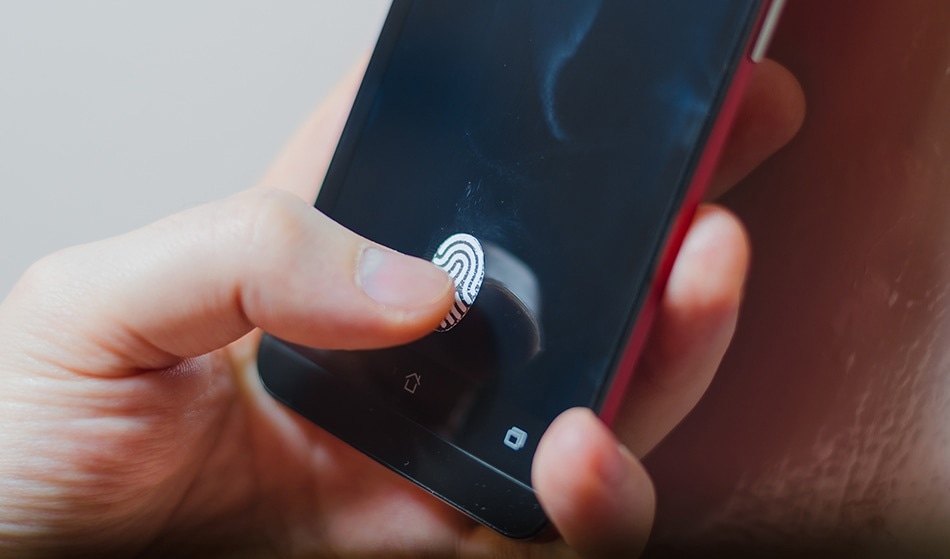The pattern of ridges and valleys found in your fingerprint is unique to you – not even identical twins share the same fingerprint – and as such it is one of the most important pieces of biometric information that distinguishes you from everyone else.

sibfox / Shutterstock
Using a person’s fingerprint as a means of identification is nothing new; it has been utilized for thousands of years. East Asian potters, for example, used to place their fingers on clay as it cured to show the work was theirs, and 19th Century criminologists used them to identify habitual criminals. It was not until the 1970s that fingerprint technology was first used to control physical access to building, for instance.
Since then fingerprint sensors have become incredibly popular and widespread – and it is easy to see why. Fingerprint sensors offer a way to reduce fraud as well as provide protected access to physical and logistical properties.
Unlike passwords or tokens, fingerprints cannot be stolen, guessed or lost making them highly precise and reliable. Furthermore, biometric fingerprint scanners are low cost, and the fingerprint technology is easy to integrate into existing infrastructure.
Fingerprint sensors perform a very basic function; taking an image of the fingertip and comparing it against information from a previously scanned fingerprint. It equates the ridges and valleys of a fingerprint – which is dictated by genetics and environmental factors – against stored data.
Fingerprint scanners can be used in one of two ways, for verification or identification. A one-to-one comparison of an individual’s fingerprint sample with a stored reference template is performed if verification is required, to gain entry to a building for example.
Identification would see a fingerprint sample compared against all the reference templates on file – like the Police’s National Fingerprint Database - to confirm a person’s identity, which occurs when the individual’s fingerprint matches any of the stored templates. Such applications of fingerprint sensors are commonly used by law enforcement following a crime scene.
Apart from law enforcement, fingerprint sensors in your mobile phone are perhaps the most common use of fingerprint scanners.
Toshiba first used fingerprint sensors in 2007, but it was not until Apple released the iPhone 5S that the technology became more widespread. Not only are they used to verify identification for unlocking a phone, but such sensors are also used to buy apps, or gain entry to apps for baking or payment purposes.
As far as phones go, fingerprint technology is designed to make life easier, but fingerprint sensors could benefit some organizations including healthcare, government, technology, and manufacturing organizations as well as institutions like universities and libraries – imagine being able to borrow a book using your fingerprint instead of a library card.

ktsdesign / Shutterstock
Fingerprint sensor technology could provide a means of identifying and tracking employees allowing the better and more efficient management of the workforce. Not only would it show that an individual is present when stated, but it also allows for the automated calculation of the number of hours worked (with the added benefits of reducing paper wastage and the number of human hours spent on manual reconciliation).
Biometric fingerprint scanners utilize fingerprint sensors and can be employed in building entry systems, finding use in ensuring the secure storage of medicines in healthcare environments. They could also be used to provide logical access to internal resources such as computers and systems containing confidential information or intellectual property.
In a government setting, such systems might be utilized to help combat fraud and security breaches, thus safeguarding confidential data and reducing costs. It could also provide a flexible and precise means of digital proof of identity for numerous applications such as border control, voter registration and national identification cards.
In the banking sector, customers could use fingerprint sensors to access in-branch services and establish links between them and their transactions. Such a system could also eliminate insider fraud.
Biometrics is one of the most swiftly growing fields in the information technology arena – it is forecast that the market will reach $23.54 billion by 2020 – with fingerprint sensor technology predicted to remain the principal form of biometric technology. It is easy to see why; the technology is cost-efficient, easily integrated, fast and highly accurate – after all, fingerprints cannot be lost, stolen or guessed, and are unique to every individual.
References and Further Reading
Fingerprint sensors history & uses: do we really need them?
Fingerprint scanners: what they are and how they work
Importance of biometric fingerprinting technology: Does your organization really need it? This will help you decide
Disclaimer: The views expressed here are those of the author expressed in their private capacity and do not necessarily represent the views of AZoM.com Limited T/A AZoNetwork the owner and operator of this website. This disclaimer forms part of the Terms and conditions of use of this website.